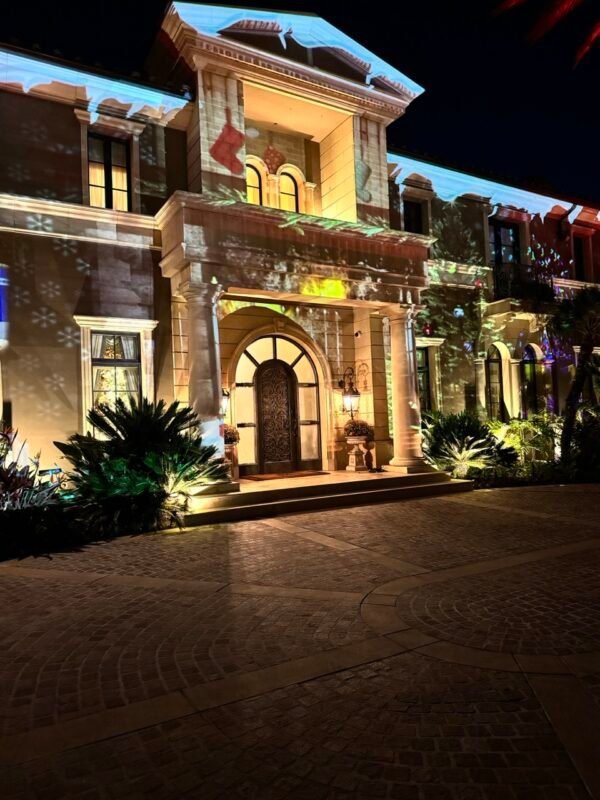Audio Visual, Event Lighting, Interactive Projection Mapping, LED Party Rentals, LED Screen Walls, Light Show Design, Projection Mapping, Projectors For Rent
From Boring Walls to Wow Moments: Inside the Art of Projection Mapping
Inside the Art of Projection Mapping
A few years ago, I wandered into a small café in Tokyo and found the entire wall behind the bar shifting from cherry blossoms to twinkling city lights—all thanks to projection mapping. It wasn’t just eye candy; the whole room seemed to buzz with possibility. That moment sparked my fascination with how light, code, and a clever projector can turn just about anything into an immersive experience. Today, projection mapping is not just for nightlife or art installations. From product launches to retail showcases, its footprint is growing fast. Let’s dive into the nuts, bolts, and show-stopping magic of this evolving tech.
Projection Mapping 101: The Art of Light Playing Tricks
Let’s start with the basics: Projection Mapping is the art of using projectors to map light onto any surface (0.07-0.09). Imagine taking a plain wall, a building, or even a teapot, and transforming it into a dynamic, interactive display. That’s the magic at play here. Instead of just projecting a flat image onto a screen, we use creative coding and motion graphics to display highly engaging or immersive content on 3D objects (0.13-0.17).
The Technology
What makes this technology so fascinating is its ability to replace the surface of an object, whether it’s a complex industrial landscape, a small indoor object, a theatrical stage, or even multiple overlapping canvases (0.21-0.30). The possibilities are endless. With Projection Mapping, we’re not just adding visuals; we’re changing the object’s appearance in real time. As one expert puts it:
Projection mapping changes the object’s appearance in real time, adding extra dimensions, illusions, and movement.
How Does It Work?
So, how does it work? The process starts with creating content in a flat, 2D format. But here’s the trick: specialized software is used to skew and manipulate these images so they fit perfectly onto the 3D surfaces we want to map (0.39-0.44). This means scanning, plotting, and compensating for every bump, curve, or angle—no matter how irregular the object might be. The result is a seamless, mind-bending illusion that brings the surface to life with interactive animations, optical illusions, and even simulated extra dimensions (0.32-0.37).
Augmented Reality
Projection mapping is more than just industry jargon. It’s a blend of digital art and technological wizardry. The software manipulation behind the scenes is crucial: content that looks flat on a computer screen must be precisely adjusted to fit the unique shapes and distortions of real-world surfaces. Whether you’re working with the facade of a skyscraper or the surface of a tabletop, the principles remain the same—only the scale changes.
Immersive Experiences
Today, Projection Mapping is everywhere. It’s used in events and retail environments to create dynamic, engaging visuals that capture attention and spark curiosity. Research shows that the demand for Immersive Experiences is driving rapid growth in this field. The global market for projection mapping was valued at $3.75 billion in 2024, is expected to reach $4.43 billion in 2025 (an 18.3% CAGR), and is projected to soar to $9.4 billion by 2029 with a CAGR of 20.7%. Advancements in projection technology, the rise of AR and VR, and the growing need for Interactive Displays in retail and hospitality are all fueling this expansion.
3D Mapping
What’s especially exciting is how 3D Mapping and spatial computing are integrating with projection mapping, pushing the boundaries of what’s possible in immersive storytelling and experiential marketing. Whether it’s a product launch, a media event, or a venue opening, projection mapping is turning ordinary moments into unforgettable, interactive experiences.
Event Experiences in Experiential Marketing: From Stage Drama to Jaw-Dropping Reveals”
Event Experiences: From Stage Drama to Jaw-Dropping Reveals
When I first stepped behind the scenes of a significant event, I was struck by how ordinary the space looked—just blank walls and empty stages. But with projection mapping, those same surfaces transform into living canvases, turning simple venues into immersive experiences that leave people talking for weeks. It’s no wonder that event experiences have become all about the “wow” factor. Today, projection mapping is the secret ingredient that makes concerts, product launches, and trade shows truly unforgettable.
Event Enhancements
Let’s break down what goes into these event enhancements. Before any magic happens, there are a surprising number of technical details to consider (0.51-0.53). I always start by asking: What’s the size and shape of the projection area? Is the event indoors or outdoors? (0.55-0.59) These questions matter because the answers shape everything that follows. For example, outdoor venues often need brighter projectors to compete with ambient light, while indoor spaces might allow for more subtle effects. The placement of the projection, the angle from which the audience will view it, and even the length and type of animated content all play a role in the outcome (0.59-1.07).
Experiential Marketing
It’s not just about the technology, though. The audience’s sense of wonder is at the heart of every successful immersive experience. I’ve seen people gasp, cheer, and scramble to capture the moment on their phones—moments that often go viral and amplify the event’s impact far beyond the venue itself. Social media reactions are now a crucial component of the equation, contributing to the rapid growth of projection mapping in experiential marketing.
The Process
But let’s not gloss over the backstage effort. Seamless results require meticulous planning and a lot of trial and error. The process usually begins with scanning and plotting the surface to be projected onto (1.11-1.14). Specialized software helps map out every curve and corner, ensuring that the visuals align perfectly with the physical space. From there, it’s a matter of tweaking content, adjusting brightness, and running countless tests to make sure the illusion holds up from every angle (1.14-1.17).
Immersive Experiences
Research indicates that immersive storytelling and interactive displays are among the central event trends for 2025. Event planners are increasingly turning to projection mapping not just for spectacle, but for engagement and memorability. The technology is being used everywhere—from corporate events and live theatre to retail launches and hospitality spaces. The projection mapping market is expected to grow rapidly, driven by advancements in projection technology and the rising demand for unique, shareable experiences.
-
Key event factors: projection area, object shape, venue (indoor/outdoor), audience position, brightness, content type
-
Surface scanning and plotting are essential first steps
-
Content must be tailored to the space and audience
-
Testing and tweaking ensure the illusion works from every angle
As I’ve learned, every successful projection mapping project is a blend of creativity and technical finesse. It’s about understanding the space, anticipating the audience’s reactions, and delivering a moment that’s both memorable and shareable. Or, as I often remind clients,
Projection mapping promises to leave a lasting impression.
The Event Experiences
Ultimately, event experiences are no longer just about what happens on stage—they’re about creating a sense of wonder that lingers long after the lights go down. And with projection mapping, the possibilities are only growing.
Experiential Marketing in Product Launch, Los Angeles
Retail Spaces, Tech Trends, and the Surprising Scope of Projection Mapping
When I first encountered projection mapping in a retail setting, I was struck by how it transformed a simple storefront into a living, breathing canvas. What once were boring walls suddenly became animated displays, captivating passersby and drawing them inside. This isn’t just about flashy visuals—it’s about reshaping the entire customer journey. Retail applications of projection mapping now go far beyond window dressing; they’re about creating interactive in-store activations that invite people to engage, explore, and remember.
Let’s Break It Down
Let’s break down how this works. At its core, projection mapping starts with flat content from a projector (1.18-1.20), but the magic happens when this content is carefully calibrated to appear correctly on a three-dimensional surface (1.20-1.21). The animated content is crafted with the unique contours and textures of the space in mind (1.21-1.24). Designers must account for distortion, color, brightness, and saturation (1.25-1.30), as well as 3D movement and illusions (1.30-1.31). Every effect is tested and refined throughout the development process (1.31-1.33) to ensure a seamless outcome—one that enhances products, increases engagement, and entertains guests (1.35-1.40).
The Reasons
Why are retail and hospitality brands investing so much in this technology? Research indicates that projection mapping is a powerful tool for creating memorable and shareable experiences. It’s not just about the “wow” factor (1.42-1.44)—though that’s certainly part of the appeal. It’s about leaving a lasting impression, whether at a product launch, trade show, or in a flagship store (1.44-1.57). The ability to blend physical space with digital storytelling is what sets projection mapping apart from traditional displays.
Immersive Experiences In Events
But the scope of projection mapping is expanding rapidly, thanks to technological advancements. Today, this technology is crossing into the realms of spatial computing, Experiential Marketing, augmented reality (AR), and virtual reality (VR). By integrating projection mapping with AR and VR, brands can create next-generation experiential marketing campaigns that blur the lines between the physical and digital worlds. Imagine a shopper using their phone to interact with projected content, or a guest at a hotel event stepping into a fully immersive, mapped environment. These scenarios are becoming increasingly common.
Market Growth
The market growth is impressive. According to recent data, the projection mapping market is expected to grow at a CAGR of 18.3% from 2024 to 2025, with projections rising to 20.7% by 2029. This surge is driven by advancements in projector hardware and software, increased demand from the retail and hospitality sectors, as well as the rapid growth of AR and VR technologies. Social media exposure and consumer demand for novelty are also fueling this trend, as people seek out experiences worth sharing.
|
Market Drivers |
Growth Rate |
Key Trends |
|---|---|---|
|
Advancement in projectors/software |
CAGR 18.3% (2024-2025) |
Integration with AR/VR, spatial computing |
|
Retail/hospitality demand |
CAGR 20.7% (by 2029) |
Experiential marketing, interactive activations |
|
AR/VR growth |
– |
Immersive storytelling, 4D projection mapping |
The Future
As we look to the future, it’s clear that immersive storytelling through 4D projection mapping is a significant trend in 2025. The integration of spatial computing and real-time data will only deepen the connection between brands and their audiences. In my experience, the most successful projection mapping projects are those that combine technical precision with creative vision, balancing the backstage work of color calibration and movement illusions with the front-stage magic that leaves audiences in awe.
Immersive storytelling through 4D projection mapping is a significant trend in 2025.
So, whether you’re a retailer, event planner, or tech enthusiast, keep an eye on this space. Projection mapping is no longer just a novelty—it’s a vital part of the evolving landscape of retail applications, technological advancements, and experiential marketing. The walls are coming alive, and the possibilities are only just beginning.
TL;DR: Projection mapping transforms ordinary surfaces into interactive, immersive experiences, driving innovation in events, retail, and branding. As technology evolves, its applications are limited only by creativity (and perhaps budget).
Other Services we provide
Audio Visual, Special Effects, Event Lighting, Event Musicians, DJ, MC, Photo Booth, 360 Video Booth, Photo Booth Rental, Halo Photo Booth, Photo Booth Rental Near Me, Karaoke Services, Arcade machine rental, tiktok Video Booth, Face Painting, Temporary Custom Tattoos, Wireless Headphones Party, LED Screen Rental, Sweet 16 DJ LA, Quinceanera DJ, LED Dance Floor, Bar Mitzvah DJ, Bat Mitzvah DJ, Event Decoration, Photographer, Videographer. Event Productions
Affiliates AV Providers
Tiktok Photo Booth / 360 video booth / sound samples / AV Stars / Free Sample Packs / Pro DJ Service / Mask Booth / / LED Party Rentals / Music DJs/ EDM DJ / Photo Booth Accessories / Israeli DJs
Read More
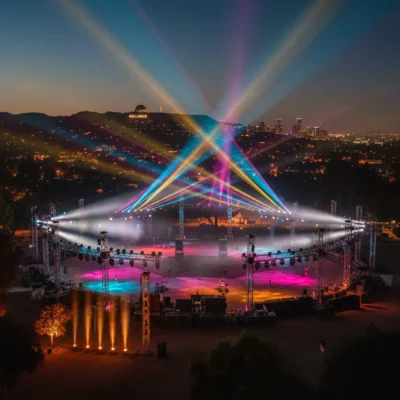
Let There Be Light: An LA Insider’s Guide to Event Lighting Rentals
Event lighting is crucial for creating memorable experiences in Los Angeles. This post covers the importance of professional lighting, various rental options, and tips for navigating the rental process to ensure your event shines.
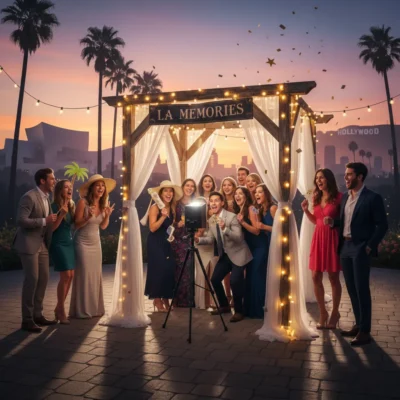
Why Photo Booth Rental in Los Angeles Makes Every Event Unforgettable
Discover the exciting options for photo booth rentals in Los Angeles, including Open Air, Glam, and 360 Video booths. Learn about pricing, features, and tips for booking the perfect booth for your event, with insights on local favorites like Tiktok Photo Booth and Angels Music Productions.
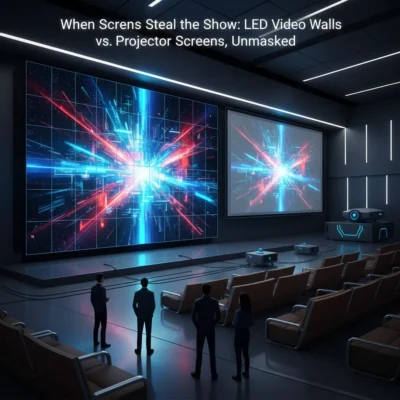
LED Video Walls vs. Projector Screens, Unmasked
LED video walls outperform traditional projector screens in brightness, visual impact, and long-term cost-effectiveness. This post shares real event stories and expert insights to help you choose the best display technology for your next event.
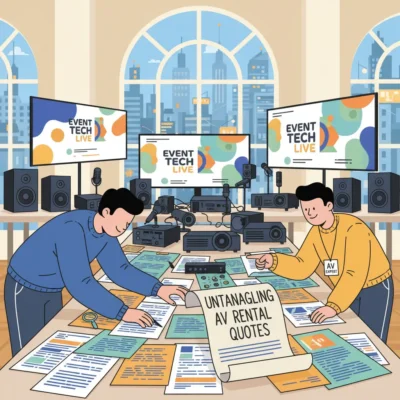
AV Rental Quotes: Insider Secrets to Getting the Best Deal
Understanding AV rental quotes is crucial for event planners to avoid unexpected costs. This post explains how rental duration, labor, and hidden fees affect pricing, and offers tips for securing the best value.
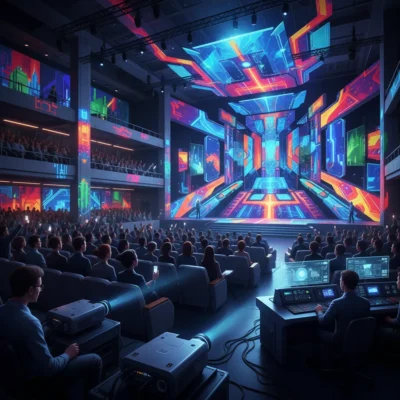
Seeing Double: The Magic of Projection Mapping in Hybrid Events
Projection mapping is a powerful tool for hybrid events, bridging the gap between in-person and remote audiences by creating shared visual experiences. This post highlights its benefits, techniques, and the importance of planning and flexibility.
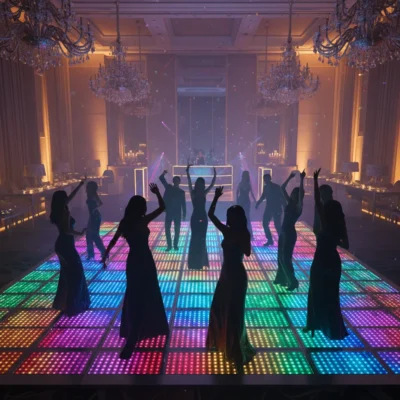
Dancing on Light: The Real Scoop on LED Dance Floor Rental for Your Next Bash
LED dance floors can elevate any event with their customizable features and interactive effects. This post discusses their benefits, pricing, and installation tips to ensure a memorable experience for guests.

